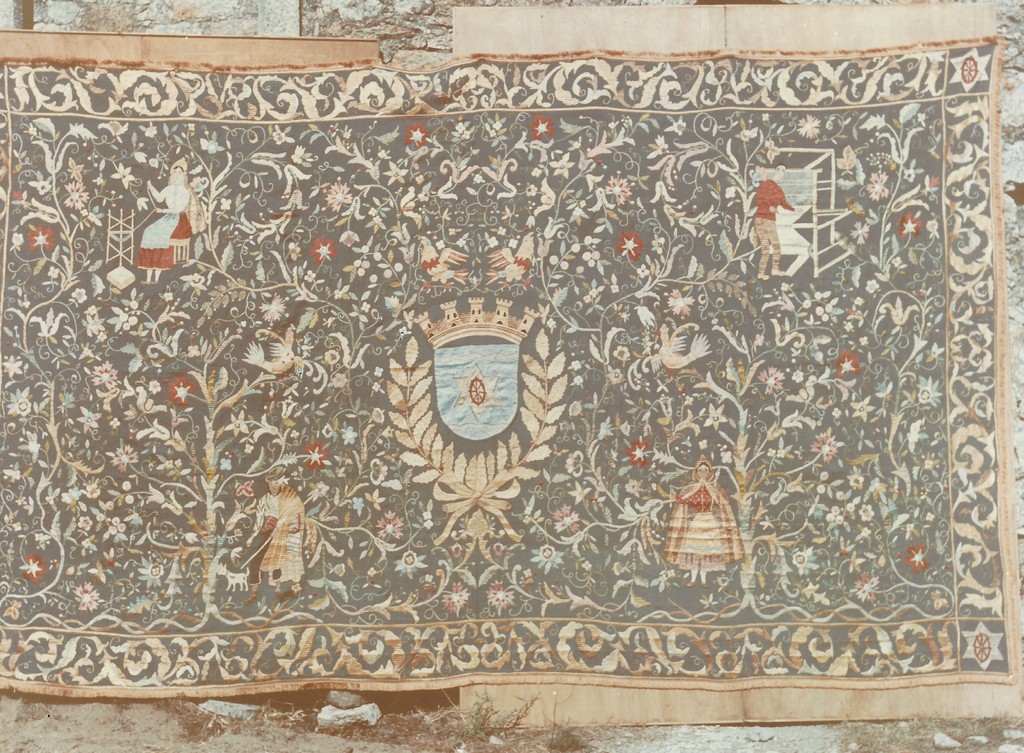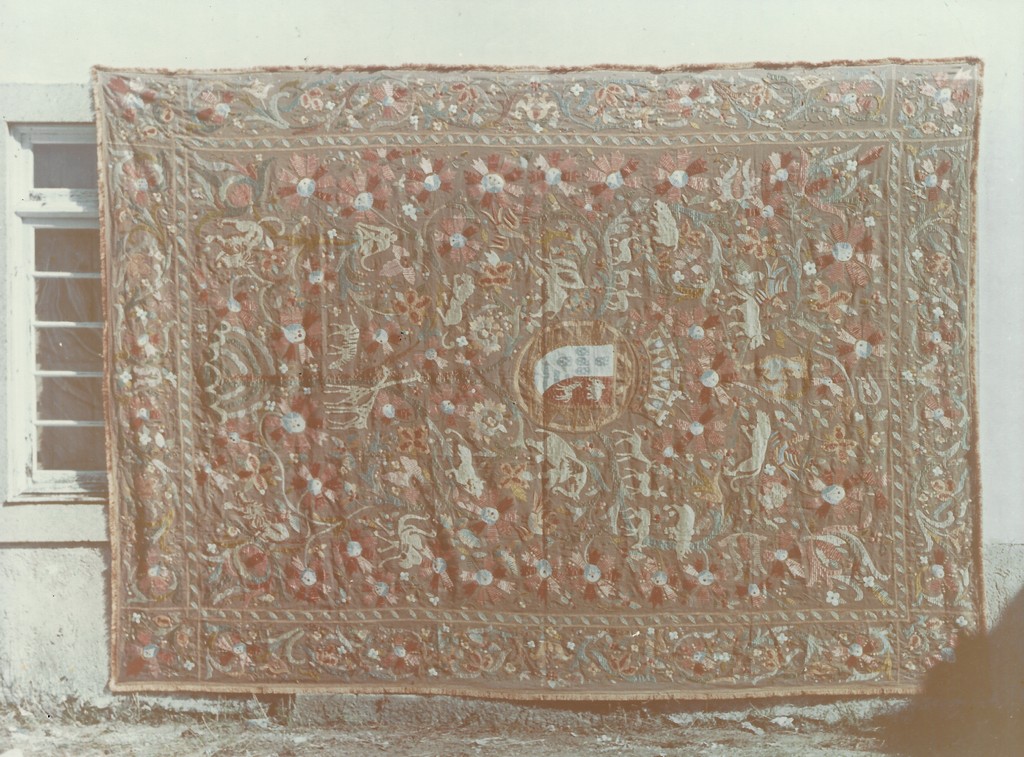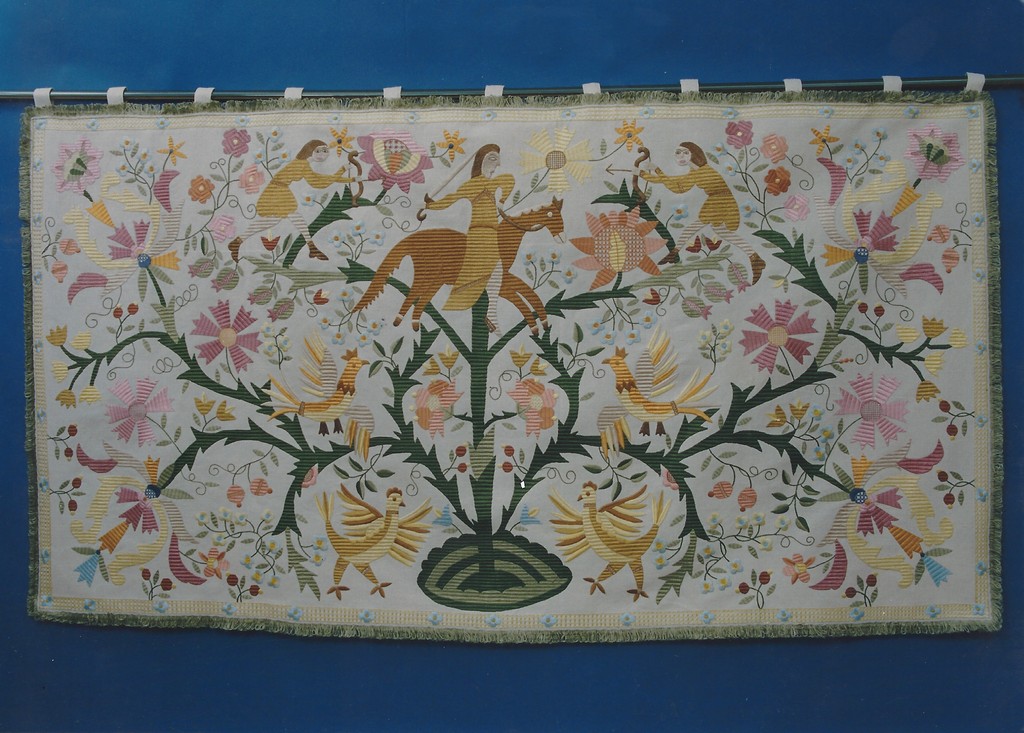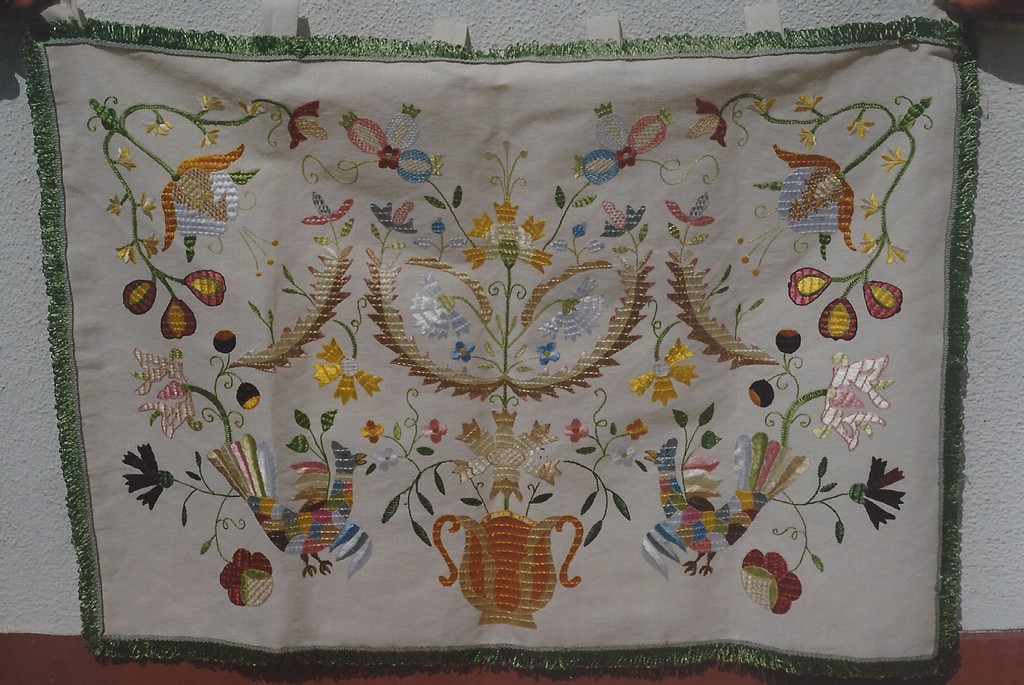STANDARDS
In the set of quilts that were the reference models in the production of the Castelo Branco embroidery we can distinguish several groups, defined from their decorative programs. These mean different organizational structures, as well as the use of different sets of motifs. In considering these two variables, structure and decorative elements, we can define what we consider to be the most usual typologies, those that constitute the reference matrix of the quilts and embroidery of Castelo Branco.
Four major groups are thus defined:
Strip" or "tile" quilts

These pieces were originally not quilts, but armoring cloths, so their length is significantly greater than that of the quilts themselves, exceeding 220cm, often reaching 280/300cm.
They feature a well-striped bar defined by geometric beading. In the corners are almost always square cards decorated with flowers inscribed in the bisector. The field of these pieces presents a decoration in which motifs of some complexity are repeated giving rise to bands that can be read either vertically or horizontally, like a tile pattern.
Both the elements structuring the design and the decoration have a vegetalistic character, as if they were branches with flowers, and the same can be said for the bar.
Sometimes, on the vertical axis, small centers are arranged, usually in odd numbers. All these pieces are densely embroidered and, in almost all of them, one can find a difficult embroidery stitch that only appears in Portuguese pieces from the late 17th century, early 18th century.
Sometimes, in this type of pieces, a center is defined by an "albarrada" that is inscribed in the existing pattern with a tenuous delimitation or even without any differentiation.
Traverse" quilts

They are defined by the center, which has a design that, for lack of a better name, looks like a crossbar. This center is sometimes still overlaid with a tile band type pattern. In other cases the field decoration is organized from the corner bisectrices, where bouquets of flowers are inscribed.
The bar still exists, but much less marked, less wide, with its boundaries more simplified.
These pieces, with these types of centers, are not very common, but they were among the most copied because of their beauty.
Frame" quilts

In the so-called "frame" bedspreads, the center is oblong, between oval and rhombus, and appears as if it were contained within a carved wooden frame, with impressed shell-shapes at its apexes.
In some examples, the vegetal elements that organize the structure of the field coalesce to define what is called a meandering pattern, a set of cartouches of irregular and asymmetric design, with flowers of varied and precious design inside.
Inside the center are bouquets of flowers where a bird sometimes perches, but where you can also see peacocks facing each other.
This group, as well as the previous ones, was part of the group of so-called "erudite quilts" at the time.
Tape" quilts

It is the quilts that are most often found. As in the previous cases, it is the design of the center border that identifies them, a very simple border, as if it were a ribbon. This tape can appear whole or interrupted at the vertices.
Within these centers one can find a great variety of compositions that have in common that they structure themselves from a well-developed branch that occupies it in its entirety. On this branch, topped by a large flower (which can be a carnation, a papyrus, a lotus flower, or other) you can find human figures (alone or accompanied) and perch, or not, one or more birds.
The field of these quilts can also have various types of designs. The most common is one in which the corner bisections have branches of various flowers opening towards the center, but it can also happen that the flowers open in the opposite direction.
In these quilts, star carnations predominate, present in their various configurations, bouquets of balls and plant elements, sometimes large, that are arranged on either side of the center or at the top and bottom of the quilt. In the terminology defined by Júlia Antunes, in 1929, these were the "popular" quilts.
